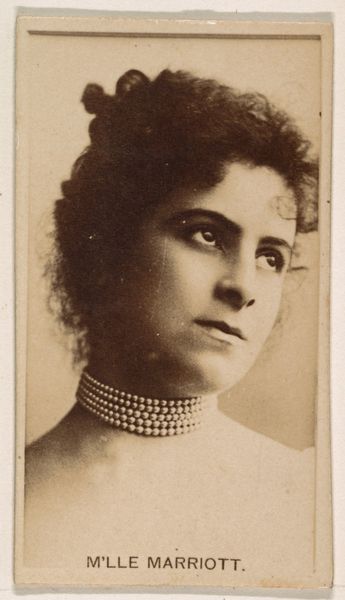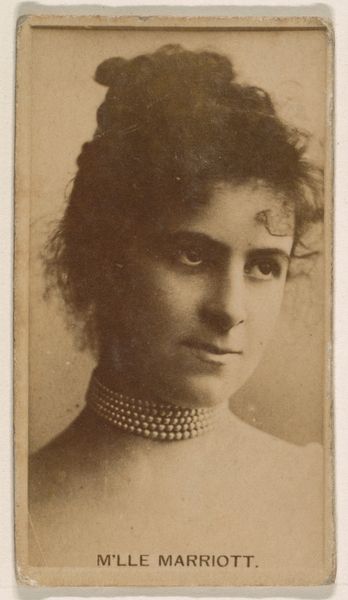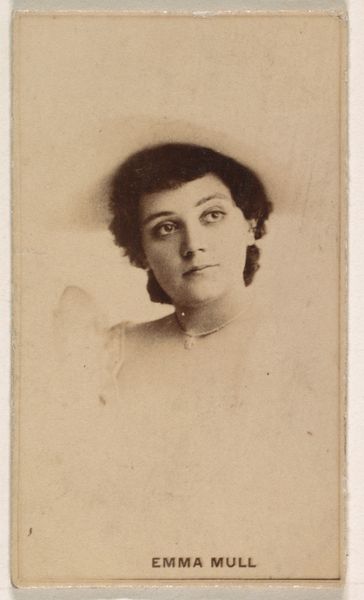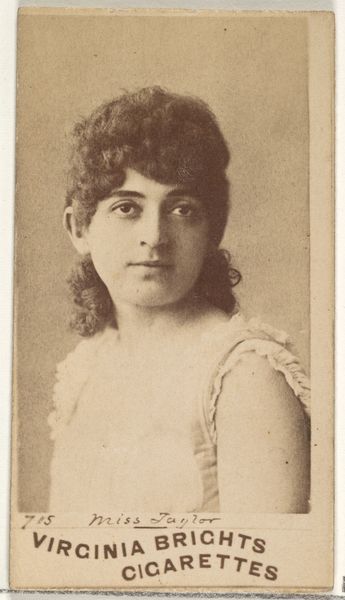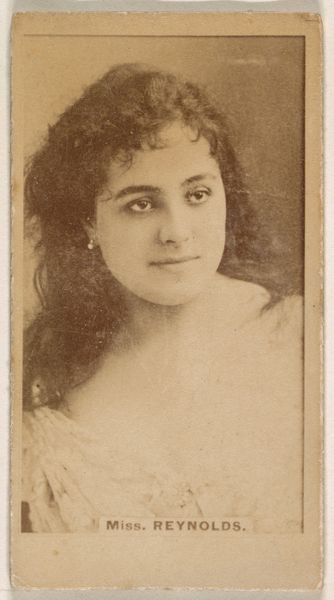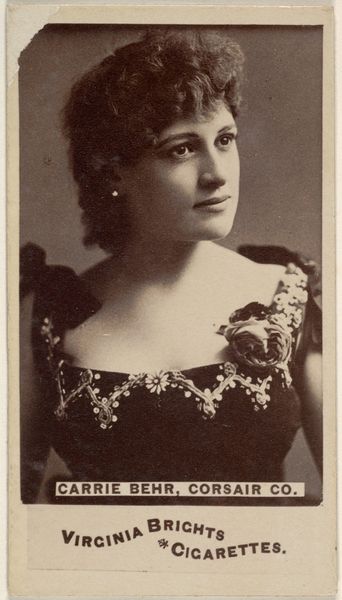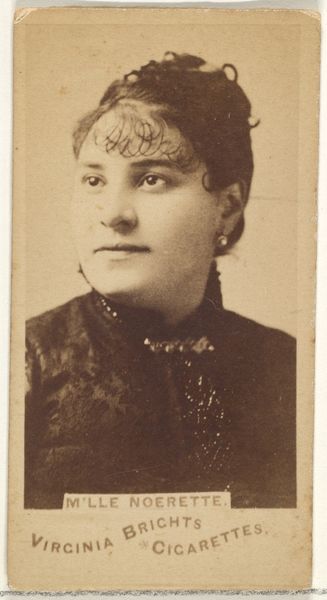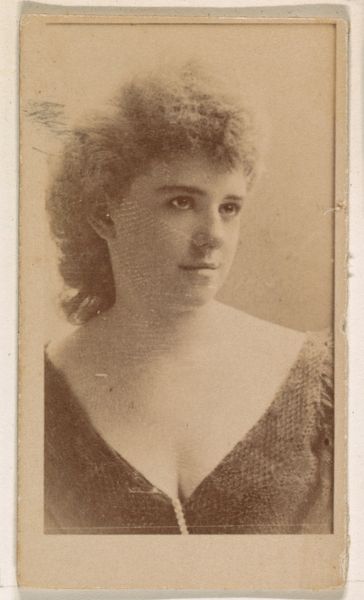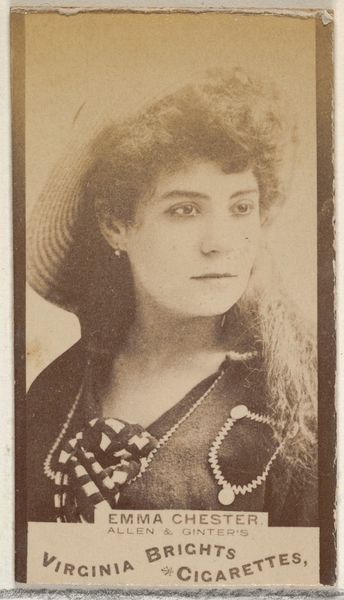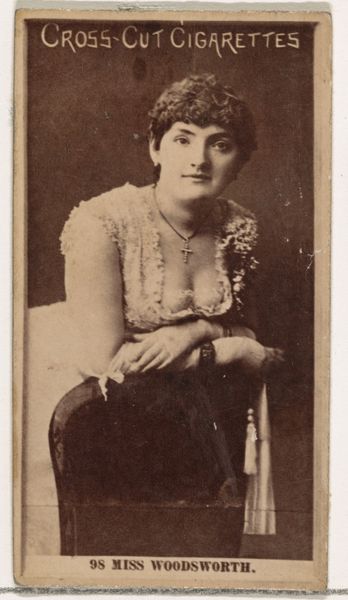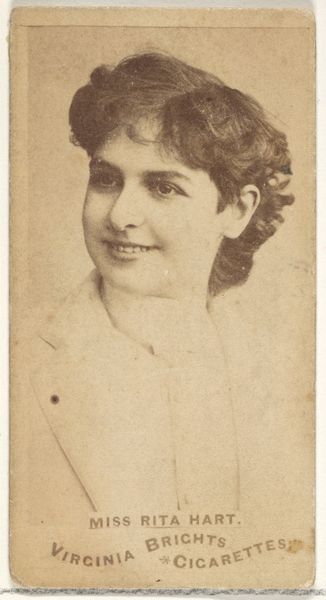
M'lle Marriott, from the Actresses series (N245) issued by Kinney Brothers to promote Sweet Caporal Cigarettes 1890
0:00
0:00
drawing, print, photography, collotype, albumen-print
#
portrait
#
drawing
#
pictorialism
# print
#
photography
#
collotype
#
albumen-print
Dimensions: Sheet: 2 1/2 × 1 7/16 in. (6.4 × 3.7 cm)
Copyright: Public Domain
Editor: This is "M'lle Marriott" from the Actresses series, dating back to 1890 by Kinney Brothers Tobacco Company. It's a small albumen print – almost like a vintage trading card. It has a warm, sepia tone and the focus is just razor-sharp on her face. What can you tell me about this piece? Curator: It’s fascinating how objects initially created for mass consumption – like this cigarette card – later transition into museum pieces. The production itself speaks volumes. This was not "high art," but a commercially driven piece using the then-relatively new technologies of photography and print. The albumen process, involving egg whites, gave a unique gloss and sharpness, making the actress seem almost tangible. Think of the laborers involved: photographers, printers, and factory workers packaging these with cigarettes. It all contributes to its cultural significance. Editor: That's so interesting! I had just been focused on the figure in the portrait and its aesthetic value. You're saying the real story is in the making? Curator: Exactly! Consider Kinney Brothers using actresses to promote Sweet Caporal Cigarettes. What did it mean to link these women’s images, their fame, to a product meant for mass consumption? This card embodies a complex interplay of gender, class, and commercialism in the late 19th century. How does its function as advertisement impact your perception? Editor: It completely changes it. I realize that seeing this image detached from its original context in the museum gives me an incomplete understanding. The medium itself becomes the message in a way. Curator: Precisely. Analyzing these mass-produced items offers invaluable insight into the labor and cultural values of the time. It allows us to look beyond simply appreciating aesthetic appeal, and towards deconstructing its historical and material implications. Editor: I see what you mean. Thank you for broadening my perspective!
Comments
No comments
Be the first to comment and join the conversation on the ultimate creative platform.
